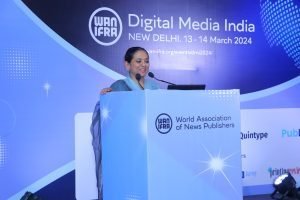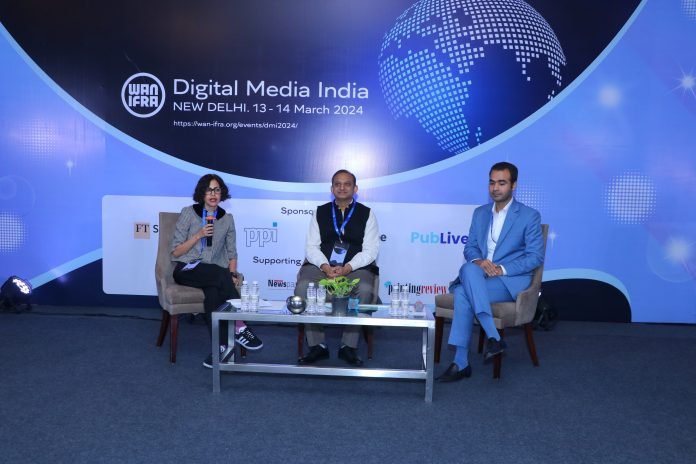The first day of the Wan-Ifra Digital Media India conference held on 13-14 March in Delhi touched on the optimized use of artificial intelligence (AI) in the growing digital landscape of news publishing. Talks on the acceptance of AI, growth strategies of digital media, content management, engagement strategies, and about the next generation potential readers being heavily dependent on digital formats stood out as the major themes.
AI-powered tools can generate news articles, summaries, or even full reports based on prompt inputs. AI can analyze user preferences and behavior to deliver personalized news content. It can improve search functionality on news websites by understanding user queries and providing relevant results, but can we (as news providers) really trust AI? Who is to say when no definite answer exists?
John McCarthy, an American computer scientist revered as the father of AI once said on the trial and errors of AI, “If it takes 200 years to achieve artificial intelligence, and then finally there is a textbook that explains how it’s done, the hardest part of that textbook to write will be the part that explains why people didn’t think of it 200 years ago.”

At the moment numerous news providers are experimenting with the concept of AI, integrating it to generate better search results on their platforms, better content curation, and a targeted approach. Suparna Singh, co-founder & CEO of Frammer AI, said that AI is only meant to assist in day-to-day news publishing, and since it is far from perfect in its utility, only time will tell what better we can harness through its implementation in the digital news format.
Digital media, as a form of news sharing, skyrocketed during the pandemic but has subsequently slowed down in its coming of age. Several panel discussions at the conference, hinted that it seems that the problem lies in reader engagement. According to Comscore data, digital news publishers in India witnessed a downfall of around 35% in January 2024 in comparison to the same month in the previous year. However it seems some legacy news publishers such as The Hindu and Dainik Jagran are affected less.

The approach to curb this downward-sloping graph of the digitization of the legacy print media varies according to the numerous providers. Puneet Gupt, COO of Times Internet said that focus on national news could be an antidote to the falling engagement of readers. Suggesting the opposite tack, Aroosh Chopra, group director, Punjab Kesari, claims that focus on hyperlocal news would be more efficient as even journalists would be keener on covering such issues. In another session BBC’s Rupa Jha, proposed that a complete news package will be a better solution as it could comprise all the required relevance.
In an upbeat presentation on its newsroom transformation project, The Hindu, said that audience engagement has increased by 21% in the last six months. Building audience trust in digital and leveraging analytics for content optimization hold a better significance as tracking traffic becomes effective in optimizing content delivery to the right audience. Pradeep Gairola, vice president digital and business head of the group said that digital is equivalent to mobile — referring to the smartphone and its on-the-go features. The Hindu reverses its publishing workflow – making page layout first for smartphones, then for desktops, and finally for print.

A 6-month research-based presentation from FT Strategies highlighted that the future generation (target 2030) will be heavily dependent on digital platforms. The study of participants in the 18-24 age group in India, the US, and Nigeria suggested contained remarks on their desire to read digested and summarized news that affects the community and more content that affects them personally. According to Liat Fainman-Adelman, manager, FT Strategies, news providers need to take steps now to secure their future audiences.

















